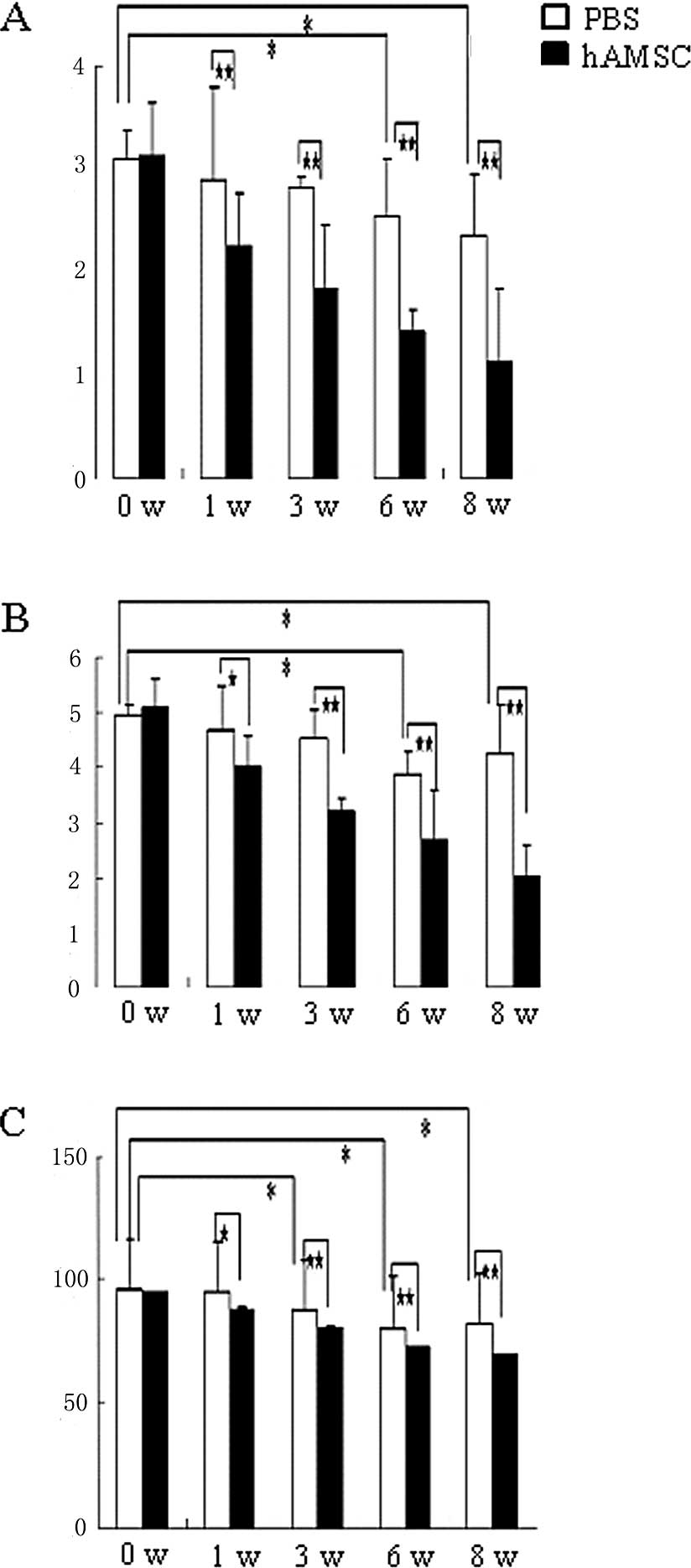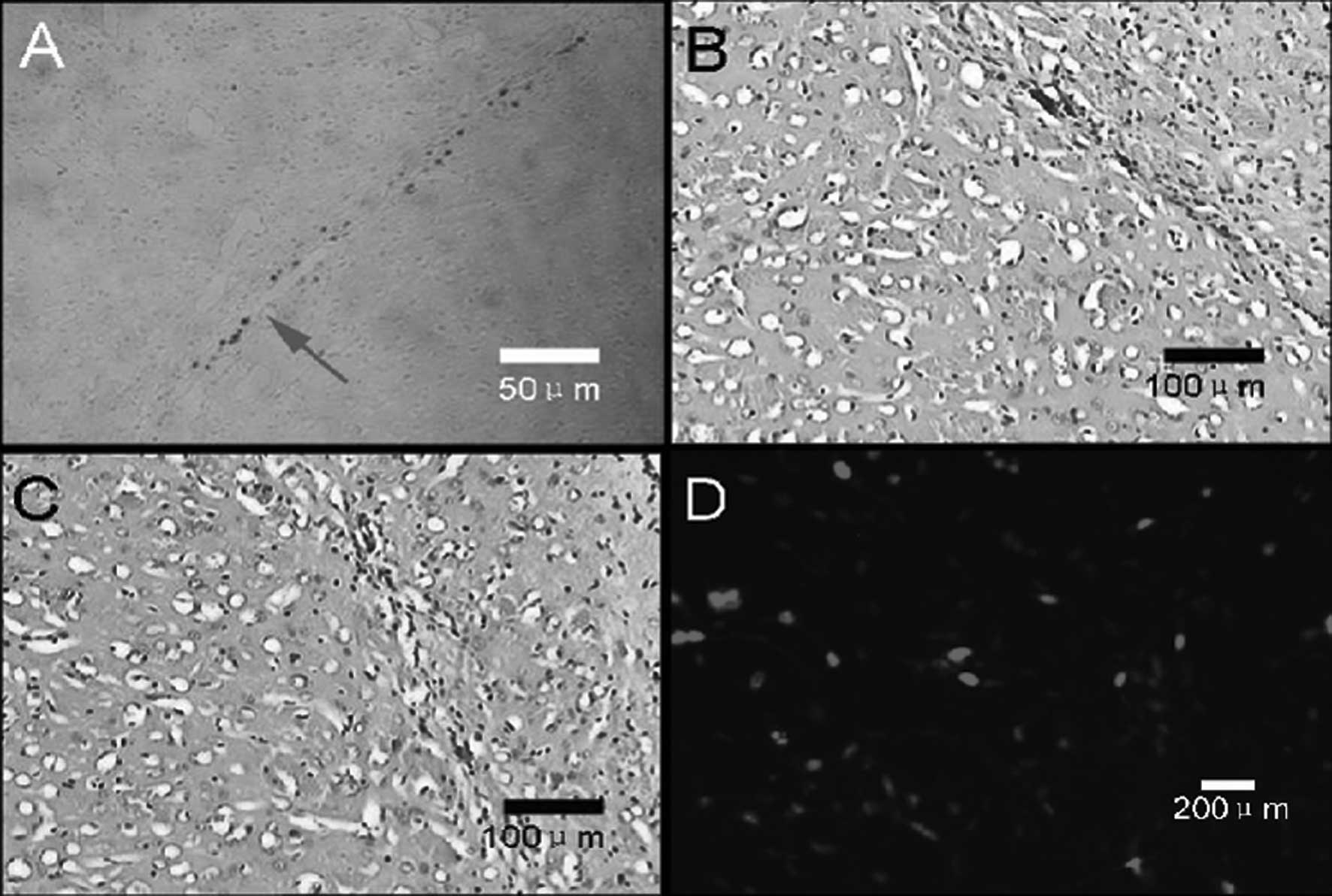Transplantation of human amniotic mesenchymal stem cells in the treatment of focal cerebral ischemia
- Authors:
- Published online on: June 26, 2012 https://doi.org/10.3892/mmr.2012.968
- Pages: 625-630
Metrics: Total
Views: 0 (Spandidos Publications: | PMC Statistics: )
Total PDF Downloads: 0 (Spandidos Publications: | PMC Statistics: )
Abstract
Cerebrovascular injury is one of the three major causes of death and is the leading cause of adult disability. Despite the increasing progress in emergency treatment and early rehabilitation in patients with cerebrovascular injury, treatment options for neurological dysfunction that presents at a later stage are lacking. This study examined the potential of human amniotic mesenchymal stem cell (hAMSC) transplantation in the repair of neurological deficits in an experimental focal cerebral ischemia model. Following the isolation of hAMSCs, growth characteristics and surface antigen expression were observed. Butylated hydroxyanisole (BHA) was used to induce the cultured cells into neuron-like cells, which were identified by immunocytochemistry. The suture model was used to induce focal cerebral ischemia in rats, which were subsequently randomly divided into experimental and control groups for treatment with BrdU-labeled hAMSCs or PBS, respectively. Neurological deficits were assessed following transplantation using the neurological severity score, beam balance test and elevated body swing test. Eight weeks later, rat brain tissue was analyzed with H&E staining and BrdU immunohistochemistry, and the survival and spatial distribution of the transplanted hAMSCs were determined. The hAMSCs proliferated in vitro, and it was found that neuron-specific enolase (NSE) was expressed in neurons, whereas glial fibrillary acidic protein (GFAP) was expressed in astrocytes. The focal ischemia model caused varying degrees of left limb hemiplegia accompanied by right sided Horner's Syndrome. When examined 1, 3, 6 and 8 weeks later, significant recovery in neurological behavior was detected in the rats treated with hAMSC transplantation compared with the control (P<0.01). BrdU-labeled hAMSCs were concentrated near the graft site and surrounding areas, in certain cases migrating towards the ischemic lesion. Local gliosis and lymphocytic infiltration were not detected. hAMSCs exhibit great potential for proliferation and are induced to differentiate into NSE-expressing neuron-like cells following treatment with BHA. Moreover, hAMSC transplantation may improve neurological symptoms following focal cerebral ischemia.














